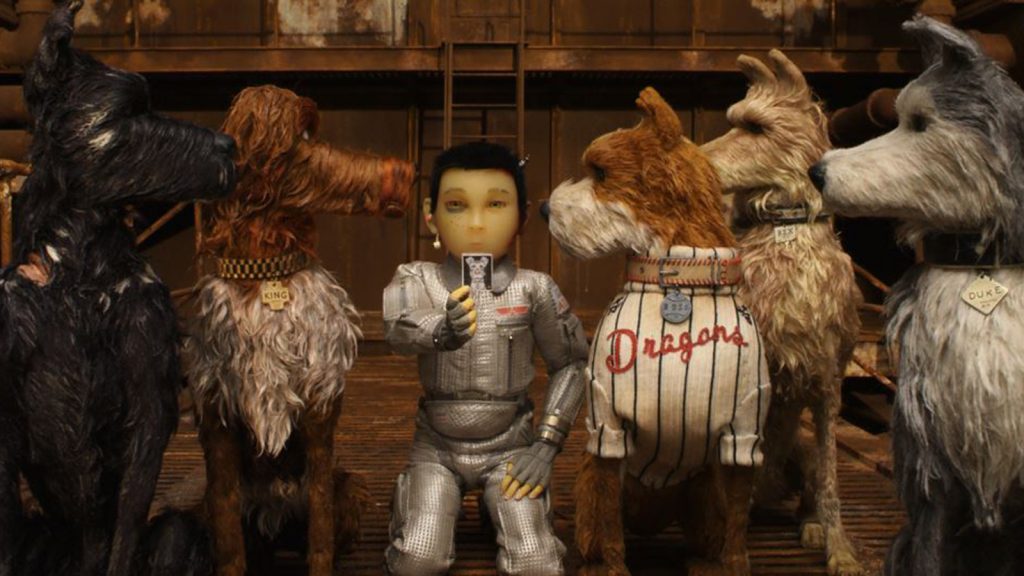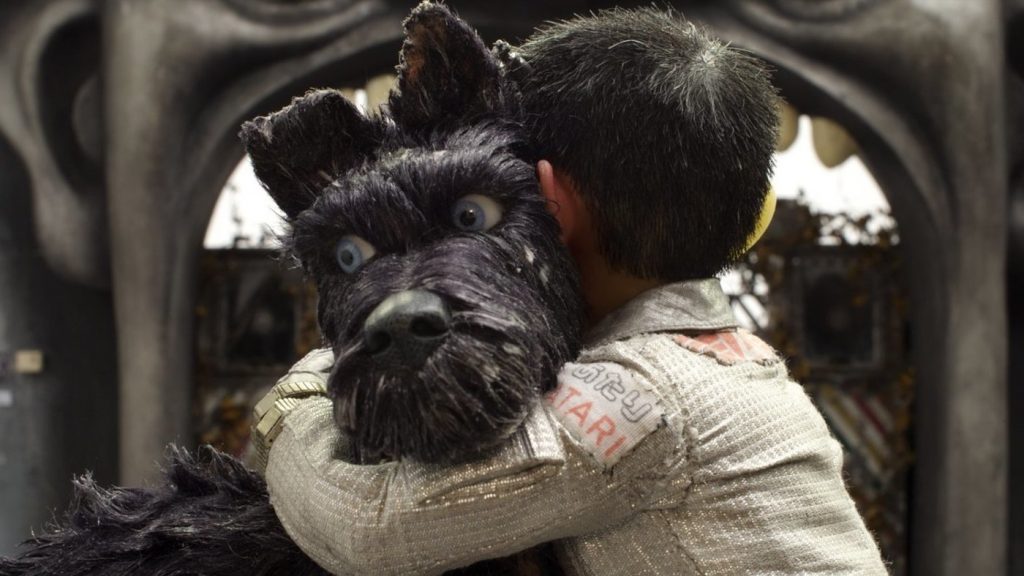Wes Anderson is a hit-or-miss director for me. When I like his movies, I really like them; they’re among my favorite movies ever (The Royal Tennenbaums and The Darjeeling Limited, for example.) I get excited for his next one, but then suffer through some that I actively dislike (The Life Aquatic with Steve Zissou
and The Grand Budapest Hotel, for example.) It’s time for one I really like; however, while I enjoyed his latest film, Isle of Dogs, it’s not likely to go on my favorites list. In fact, I remember enjoying his previous stop-motion effort, Fantastic Mr. Fox, more.
If there’s one sure thing in a Wes Anderson film, it’s his unique style. Live action or animation, each shot is creatively balanced and framed, often like we’re looking into a shoebox diorama into which the camera will occasionally zoom in or zoom out. For live action, cinematographer Robert D. Yeoman has always acted as an extension of Anderson’s creative eye; for animation, it’s been Tristan Oliver. With Isle of Dogs, it seems Anderson and his team may be experimenting a little with some new techniques. The story is more epic than usual and I don’t recall previous use of split-screen. (If there has been, it’s more memorable here.)
The big addition, though, is some traditional animation mixed with the stop-motion animation, and I love it! The “live” action is all stop-motion, but when events are reported through television, as many of them are, it switches to traditional animation. On one hand, this could allow a perhaps simpler, yet more elaborate, way to show what’s happening. Maybe you can do things with traditional that you can’t with stop-motion. However, in today’s political environment, I also see a subtle comment about how things can look different on TV than they do in real life. Can we believe what we’re watching?

That may sound like a stretch, but Isle of Dogs is very much about a corrupt government misleading its people. In fact, during cabinet meetings, Mayor Kobayashi (Kunichi Nomura) brags about the successful brainwashing of the citizens of Megasaki City. He does this to gain support for a decree that banishes all dogs to “Trash Island.” His purpose is explained at the end, but if you’re paying attention during the prologue, it comes as no surprise. I find it hilarious that in almost every scene featuring a villain, at least one cat is present. On its simplest level, it’s all about cats vs. dogs.
Upon that simple level, though, a deep, rich story is constructed. And it doesn’t take long to realize that it isn’t a story for children; that is, unless they don’t mind seeing graphic depictions of wounded animals who have survived experimentation, as well as what I belive is the first-ever animated kidney transplant. I don’t think children would enjoy Isle of Dogs, even though the narrative follows a boy searching for his lost dog. Atari (Koyu Rankin), who happens to be the nephew of Mayor Kobayashi, travels to Trash Island to find his canine best friend, Spots (Liev Schreiber).

The dogs he encounters on Trash Island call Atari, “the little pilot.” Formerly domesticated pets like Rex (Edward Norton), King (Bob Balaban), Boss (Bill Murray) and Duke (Jeff Goldblum) immediately find kinship with him and want to help him complete his quest. Their pack “leader” doesn’t, though. Chief (Bryan Cranston), is a cranky old stray who’s always overruled by a vote from the others. With the set-up so far, it’s unexpected when Chief becomes the main character and is the one who goes on a spiritual journey and whose life changes by the events of the story. Cranston delivers a moving performance through use of only his voice.
Meanwhile, it takes a high school newspaper to bring the truth about Mayor Kobayashi and Trash Island to light. However, it’s not a local student leading the charge; it’s an exchange student named Tracy Walker (Greta Gerwig). With her blonde afro and speckled face (I don’t know if the spots are freckles or pimples), she’s a militant reporter collecting evidence and hilariously confronting the woman who knows the truth about a cure for the “dog flu” that Kobayashi uses as an excuse to banish the dogs. A curious point that has raised some controversy is that only Tracy and the dogs speak English. Japanese dialogue isn’t even subtitled.
I like so much about Isle of Dogs, and the fact that I’m a dog-lover adds emotional depth for me. I feel genuine compassion for these animated creatures; the villains are more villainous and the heroes more herioc. The only problem, and maybe I was tired, is that the overall movie drug a little for me. It maintains a consistent level of excellence throughout, but perhaps doesn’t have any peaks and valleys to change the pace. I grew restless, which is another reason this movie isn’t for kids. However, I saw it with a very discriminating moviegoer who despises movies “like” this, and he loved it, so I won’t hesitate to recommend you see it.



